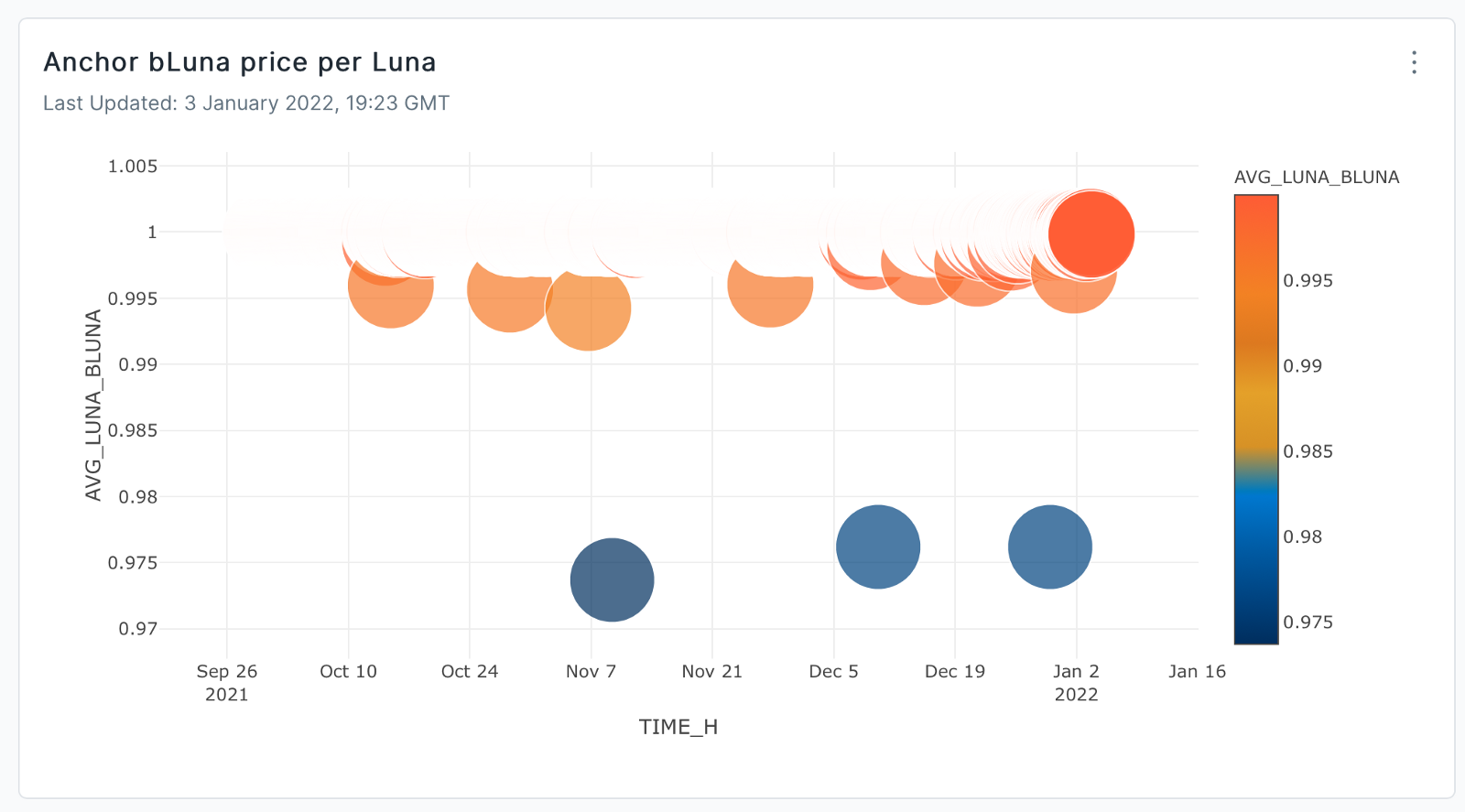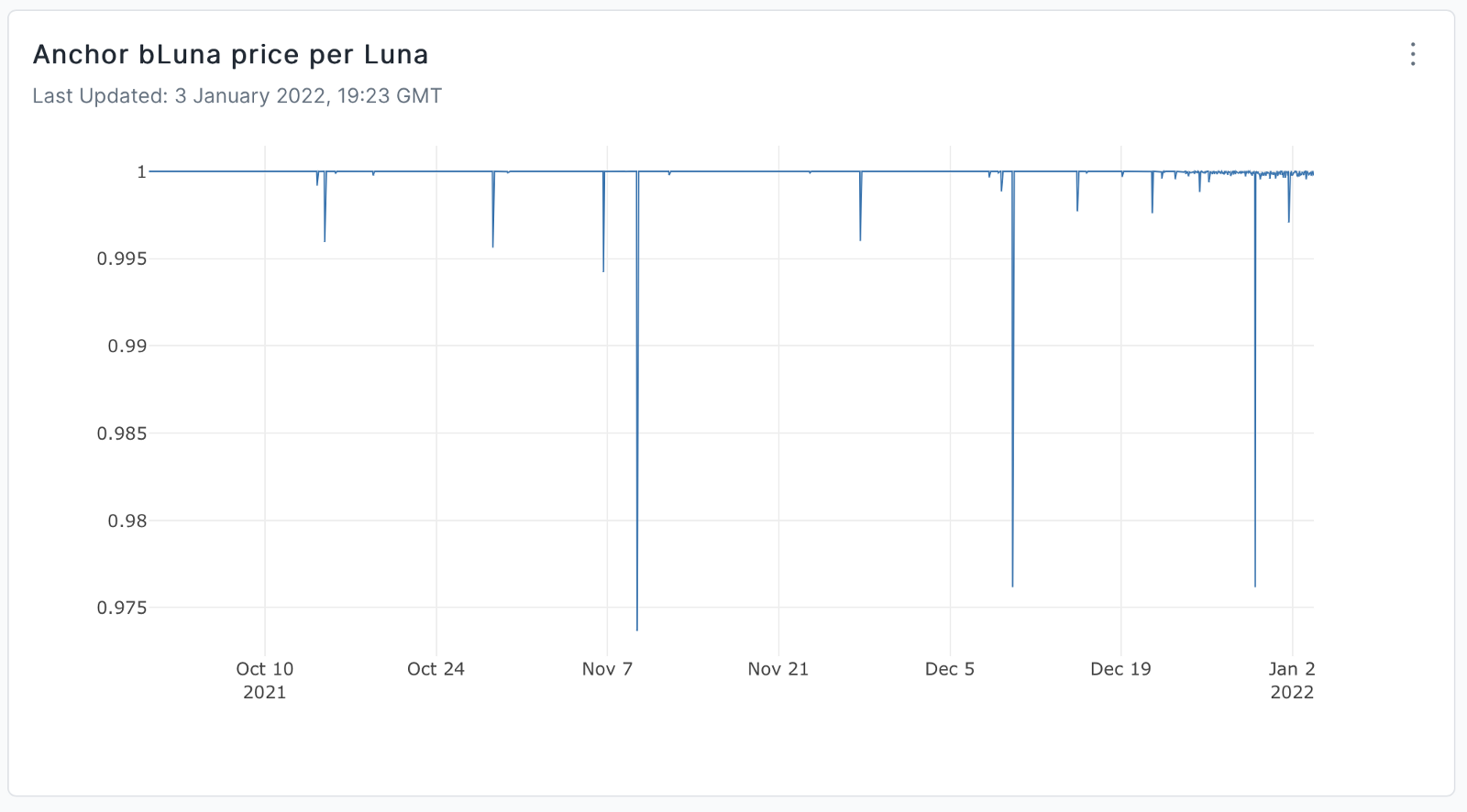The end of the year is normally a time to wind down and prepare for the holiday season, but the last few weeks of 2021 saw a crypto market that showed no signs of resting.
One of the headline-grabbing stories related to Terra reaching an all-time high in terms of the total value locked (TVL), and the project surpassed Binance Smart Chain (BSC) as the second-largest decentralized finance blockchain after Ethereum. After reaching the $20-billion TVL mark on Dec. 24, Terra’s TVL has come down to around $19.3 billion at the time of writing according to data from Defi Llama, but this is in no way, shape or form a bearish signal.

Looking at the TVL in United States dollars versus LUNA, the former has experienced exponential growth since September 2021 while the latter remains quite flat during the same period. It is not hard to see that the contributing factor to the recent increase in the U.S. dollar TVL is the increase in LUNA’s price itself.

Let’s take a closer look at some of the strategies used to arbitrage between LUNA and its bonded asset bLUNA.

LUNA is the governance and staking token of the Terra blockchain, whereas bLUNA is the token that represents the staked LUNA and its corresponding block rewards. Since bLUNA is fungible and transferable just like LUNA, it’s also traded on Terra’s decentralized exchange.
Like other currency or token pairs traded on exchanges, the LUNA/bLUNA pair traded on different decentralized exchanges (DEX) such as TerraSwap, Loop Markets or Astroport may have different prices due to price inefficiency across different platforms. Arbitrageurs will profit from buying at a lower price from one protocol and selling at a higher price on another, helping the platforms resolve price inefficiencies and eventually reach a fair price across all exchanges.
Besides the common reason for price inefficiency, there are other factors specifically related to the nature of bLUNA that make the LUNA/bLUNA price different across protocols.


(1) More users selling bLUNA than buying on DEXs (hence bLUNA is worth less) because burning bLUNA on Anchor Protocol takes 21 days if it’s not an instant burn. So, if users want to get LUNA back instantaneously, they need to go to a DEX to sell bLUNA. (For an instant bLUNA burn on Anchor, the rate is the same as TerraSwap.)
(2) Users don’t normally want bAssets as much as bLUNA unless they need to use them as collateral on Anchor. Currently, Anchor provides bonding functionality to exchange LUNA for bLUNA at a very close to but slightly lower than 1 ratio — i.e., investors get slightly less than 1 bLUNA for 1 LUNA. Even though the exchange rate on DEXs is better (traders get more than 1 bLUNA for 1 LUNA on DEXs), users tend to seek the most convenient way, which is to use the Anchor Bond, to get their bLUNA so they don’t have to switch between different protocols.
How to capitalize on Terra’s arbitrage opportunities
Based on the price difference explanations presented earlier, there are two main ways to arbitrage LUNA and bLUNA.
TerraSwap, Loop Markets and Astroport all provide swaps for LUNA/bLUNA. Small price differences often exist across these DEXs, which create arbitrage opportunities for traders to buy the pair at a lower rate on one DEX and sell at a higher rate on another.

The graph below annualizes the daily arbitrage return between either two of the three DEXs. The best opportunity existed on Dec. 15 between TerraSwap and Loop, with an annual percentage yield (APY) of almost 600%.

Investors could swap LUNA for bLUNA on one of the DEXs that offers the highest bLUNA per LUNA, burn bLUNA on Anchor, and wait 21 days (plus three days) to get more LUNA back. Note that burn on Anchor has to be a normal “slow” burn; instant burns will not work because the exchange rate is the same as TerraSwap.
Based on the 24-day (21 + three days processing from the Anchor burn) annualized return, the graph below shows the APY from arbitraging between different DEXs and Anchor.

This could be because the increased popularity of Terra and more participation in different Terra protocols have helped rationalize prices across platforms, reducing price inefficiencies and arbitrage opportunities and consequently creating a fairer price.
Savvy investors are always watching for the next opportunity
As shown in the December 2021 historically observed swap data, LUNA/bLUNA arbitrage opportunities exist across different protocols on Terra. Traders can choose the riskier way to arbitrage among different DEX platforms such as TerraSwap, Astroport and Loop Markets, or they can choose the safer way to arbitrage between these DEX platforms and Anchor, given they are willing to hold bLUNA for 24 days.
The annualized return from the DEX and Anchor arbitrage strategy consistently performed better than the risk-free Lido liquid staking in December 2021 until only recently when the return almost evaporated on Jan. 1, 2022.
This was possibly due to more participation and price rationalization in the Terra protocols. The arbitrage opportunities will likely reappear again in the future due to volatilities in trade volumes and participation or from the launch of new DEX protocols.
The views and opinions expressed here are solely those of the author and do not necessarily reflect the views of Cointelegraph.com. Every investment and trading move involves risk, you should conduct your own research when making a decision.







Leave A Comment